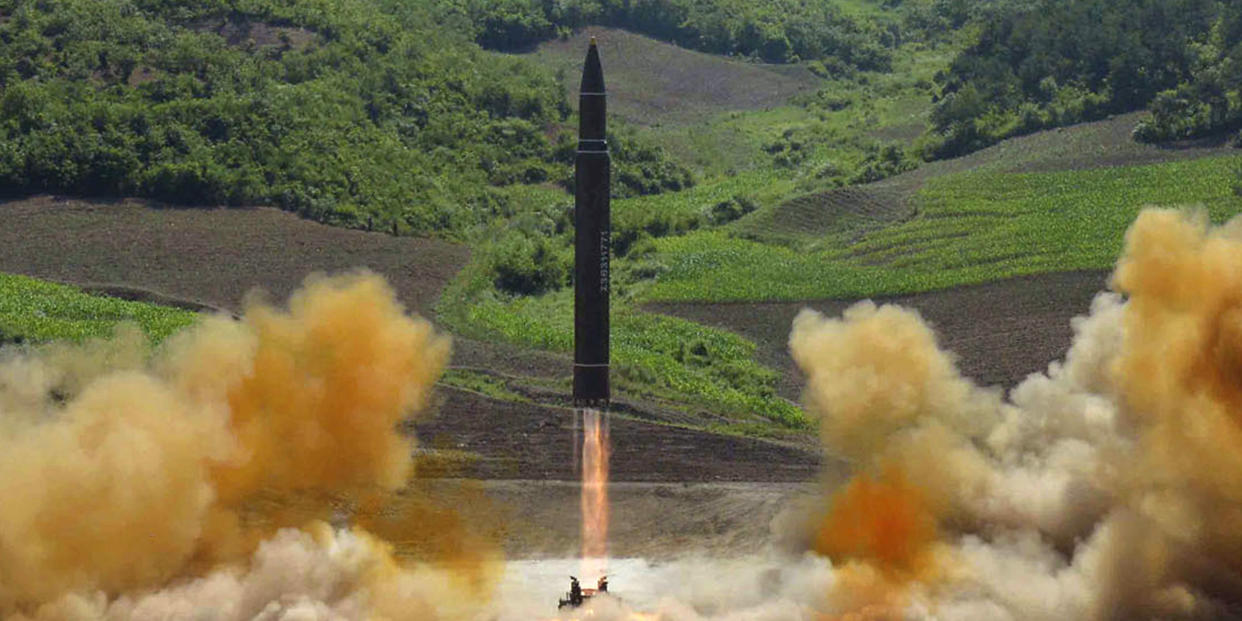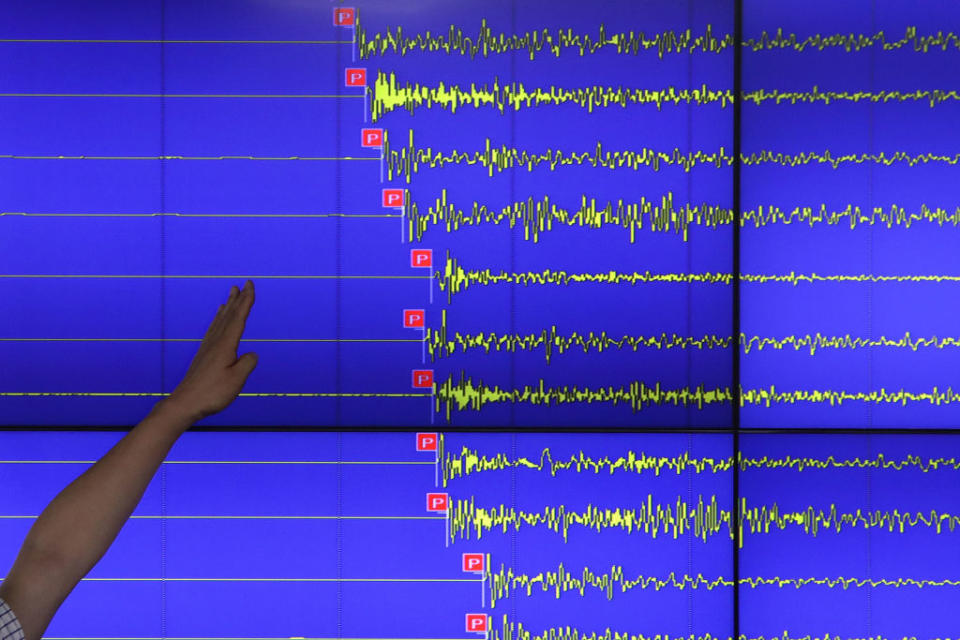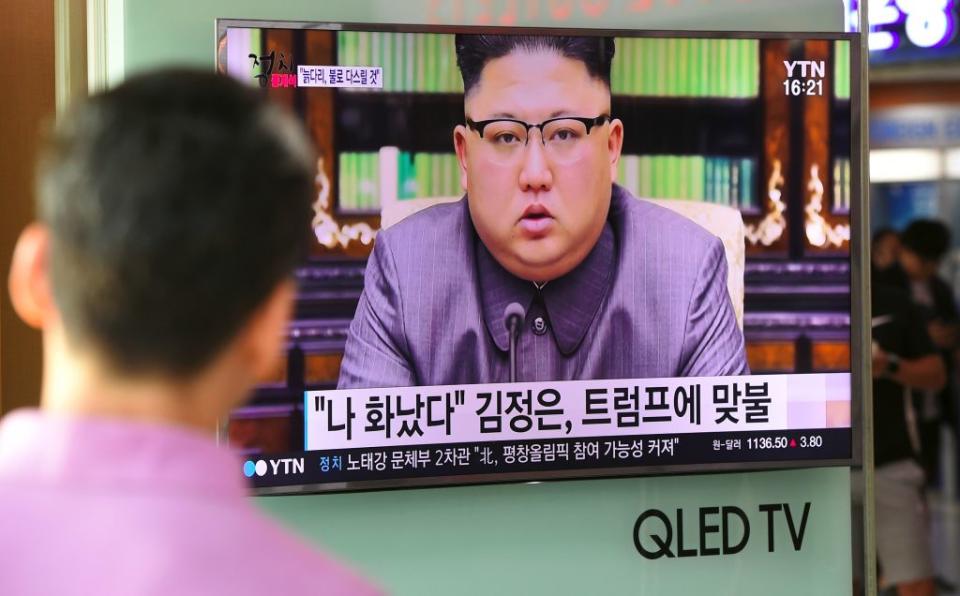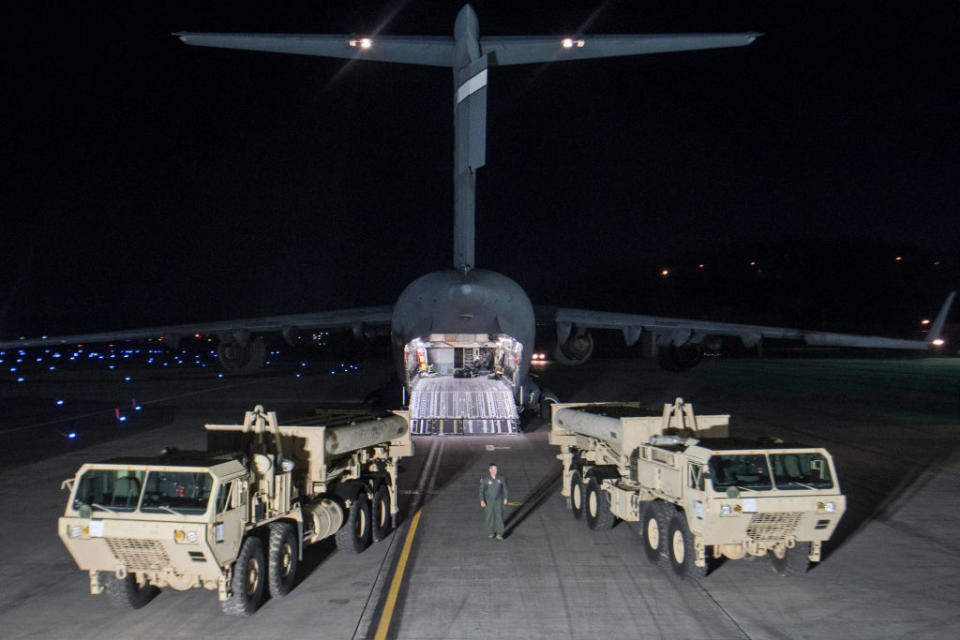What Is an EMP, and Could North Korea Really Use One Against the U.S.?

The current standoff between the U.S. and North Korea has seen many threats, televised and Tweeted. The U.S. has sent F-35s and carried out simulated attacks with B-1s, while North Korea has fired missiles over Japan and threatened to shoot down U.S. planes.
What would an actual North Korean attack look like? Chances are, it's not what you're thinking. Instead of unleashing the traditional nuclear nightmare, North Korea could go another route-an EMP. An electromagnetic pulse could take down an electrical power grid, causing economic chaos rather than human casualties.
Back in March, a bogus claim circulated that 90 percent of Americans would die in such an attack, a figure also regurgitated by a former director of the CIA. That simply is not the case. But North Korea did describe its latest test as "a multifunctional thermonuclear nuke with great destructive power which can be detonated even at high altitudes for super-powerful EMP attack."
Brinkmanship or not, this is a threat worth taking seriously.
Understanding EMPs

Nuclear weapons do damage in three ways: blast, heat, and radiation. For terrestrial explosions, the first two are what you need to worry, about as radiation is mostly absorbed by the air. But things are different when the explosion occurs in space. High-energy gamma rays collide with air molecules at around 15-20 miles altitude, producing a cascade of electrons which spin down through the Earth's magnetic field, producing an electromagnetic pulse known as E1.
The intensity of this pulse depends on the size and type of bomb, the altitude of the detonation, and the latitude. Bombs typically only emit 0.1 percent to 0.5 percent of their energy as gamma radiation, though exotic designs may increase this output. While there is no indication that North Korea could increase this number, even 0.1 percent is effective when power is measured in megatons.
Why this tactic could be appealing for the reclusive regime is that it requires less accuracy.
A nuke also produces two other types of pulses. One called E2 is an EMP that comes from high-energy neutrons, and the much slower E3 is produced by the expansion of the nuclear fireball itself as it pushes against the Earth's magnetic field. A weapon of more than 100 kilotons affects everything within line of sight. That means a blast at 60 miles will affect a 700-mile radius. The only spot not affected will be a small area close to ground zero, almost vertically below the explosion, where the Earth's magnetic field creates an "eye of the storm."
The reason this tactic could be appealing for the reclusive North Korean regime is that it requires less accuracy. While North Korean ICBMs may not have guidance good enough to hit a target the size of city, an EMP only needs to hit a general area.
Lights Out

So, what would be the effects on the ground from a high-altitude nuclear blast? The short E1 pulse induces strong, transient electrical currents in conductors, and the longer the conductor, the more voltage it experiences. Small devices like smartphones and laptops may be unscathed, but the real problems happen in long cables that would experience surges of 10,000 volts or more.
That's not going to harm a power line, but, as a 2010 report on EMP effects for Oak Ridge National Laboratory points out, it will affect the low voltage sensor and control lines connected to relays and control electronics. These lines usually only carry a few volts, and the surge will destroy computers, communication devices like routers, and safety relays.
The E2 pulse presents little danger, because it resembles lightning and most systems already have protection for this sort of surge. The long, slow E3 pulse is a threat, though, and may be strong enough to burn out transformers attached to long power cables.
While the generators themselves may be left intact, the damage inflicted by E1 and E3 pulses mean no electricity can reach people, so the lights will go out. What happens after that is speculation. The most extreme suggestion is that, pushed back to 19th century technology, America would starve, but likely it the situation wouldn't be quite so dire.
On the Defense

Stopping an EMP attack isn't easy. A high-altitude nuke is harder to stop than one coming down to low level. While the U.S. Ground-Based Midcourse Defense missiles can reach into space, shorter-range missile defenses like THAAD and Aegis may not be able to hit an ICBM at such high altitude.
Hardening electrical infrastructure against EMP is possible-in fact, some states have toyed with the idea of testing out such defenses. But an adequate EMP shield would cost billions and take years to implement. More than likely, it will likely take a major incident to convince people to make that kind of investment in the grid.
Deterrence has been the usual U.S. defense against nuclear attack, but that generally means retaliating in kind. Striking North Korea would be impossible to do without harming our ally South Korea, and in any case, the effects would hardly be equivalent. North Korea has one of the world's most unreliable electricity supplies already. Even when it is working, it has less than one-tenth the capacity per capita of its southern neighbor. Power cuts are common, and many homes rely on batteries or cheap Chinese solar cells to power their few small appliances.
If Kim Jong-un chooses to fire a nuclear warning shot which causes damage but no direct loss of life, will the U.S. have an effective response? Of course, nobody wants to fire the first shot which might start a spiral of destruction, but a non-lethal attack that takes out electricity supplies would be a way of escalating without killing anyone.
Some have suggested that North Korea's next move may be a massive cyberattack. But a nuclear EMP would prove North Korea's nuclear capability and also cause billions of dollars of damage. The U.S. might shrug off yet another cyberattack, but an EMP is impossible to ignore.
You Might Also Like

